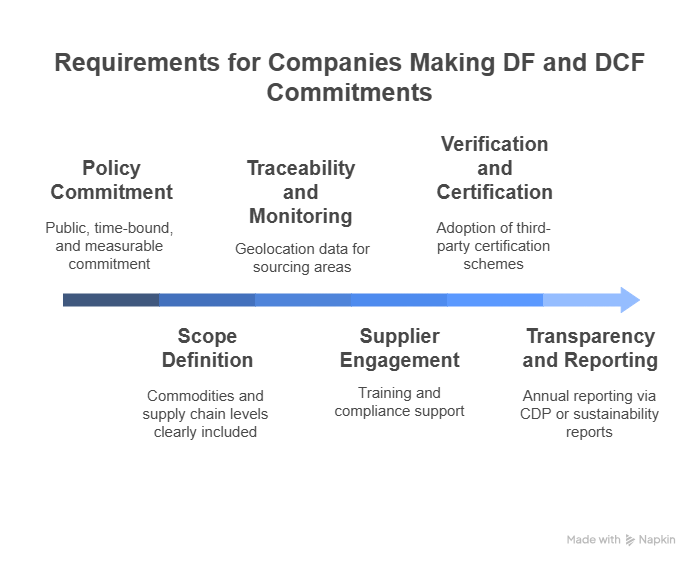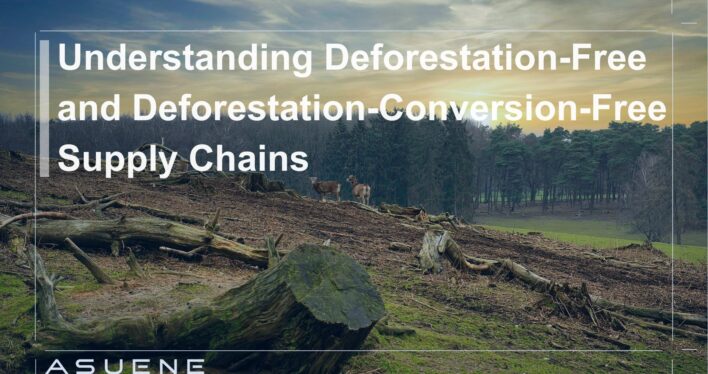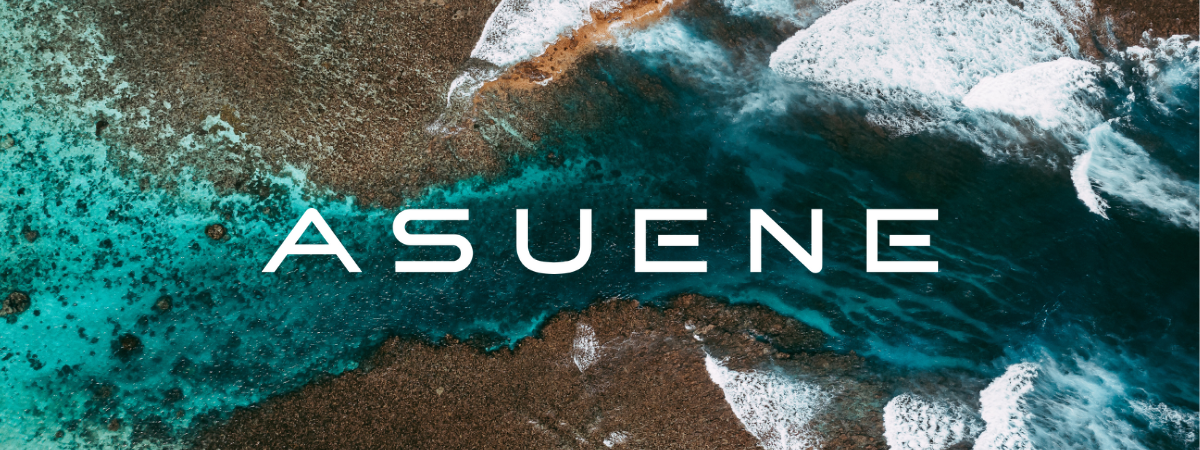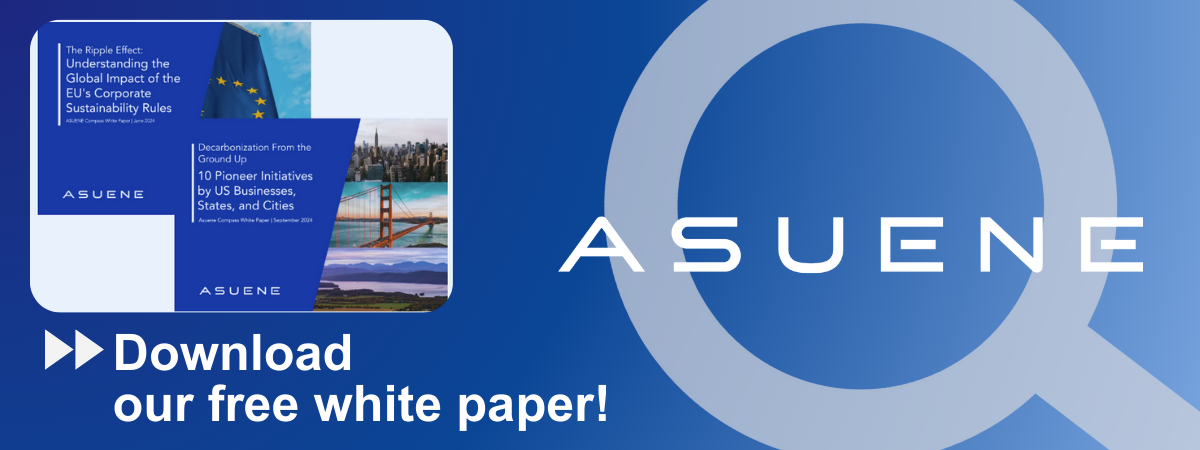- Article Summary
-
Overview
As ESG expectations rise among regulators, investors, and consumers, understanding deforestation-related commitments has become critical. Two major frameworks lead this conversation: Deforestation-Free (DF) and Deforestation-Conversion-Free (DCF). While similar in their environmental aims, these frameworks differ in scope, regulatory alignment, and implementation complexity.
This article outlines the distinction between DF and DCF, identifies key commodities driving ecosystem loss, summarizes what companies need to commit to these goals, and explains how DF and DCF are embedded in global disclosure platforms like CDP.
What Are DF and DCF Commitments?
Deforestation-Free (DF) refers to supply chains that do not source commodities from land deforested after a specific cutoff date. These commitments typically focus on forests as defined by international standards, often excluding other ecosystems like savannahs or wetlands.
Deforestation-Conversion-Free (DCF) expands this scope, prohibiting conversion of any natural ecosystem like grasslands, wetlands, and peatlands into agricultural or industrial land after a certain date. DCF reflects a more holistic approach to ecosystem protection, recognizing the carbon storage, biodiversity, and cultural value of all native landscapes.

Commodities Most Linked to Deforestation and Conversion
Several globally traded commodities are consistently tied to ecosystem degradation, often in tropical and subtropical regions. These are the primary focus of both voluntary commitments and regulatory frameworks:
| Commodity | Key Production Areas | Ecosystems Affected |
|---|---|---|
| Soy | Brazil, Argentina, Paraguay | Amazon, Cerrado, Chaco |
| Palm Oil | Indonesia, Malaysia, PNG | Tropical forests, peatlands |
| Cattle Products | Brazil, Colombia, Bolivia | Amazon, Pantanal, Chaco |
| Cocoa | Côte d’Ivoire, Ghana, Nigeria | West African rainforests |
| Coffee | Latin America, Ethiopia, Vietnam | Cloud forests, mountain ecosystems |
| Rubber | Southeast Asia, West Africa | Tropical rainforests |
| Timber | Russia, Canada, Southeast Asia | Boreal and tropical forests |
These commodities are regulated under policies like the EU Deforestation Regulation (EUDR) and scrutinized by investors through ESG ratings and platforms like CDP.
Requirements for Companies Making DF and DCF Commitments
To credibly commit to DF or DCF goals, companies must implement a comprehensive set of practices, many of which align with the Accountability Framework Initiative (AFi) and CDP standards:
1. Clear Policy
Companies should start by writing a clear policy. This should say which natural areas they will protect, what products and places the policy covers, and when they will meet their goals. It must include a cutoff date (no clearing land after this date) and a target date (when they plan to be fully compliant).
2. Define the Scope
The policy must also explain which products are included and if it applies to all suppliers—both those the company works with directly and those further down the chain.
3. Trace and Monitor
It’s important to know exactly where products come from. Companies can use maps, GPS, or satellite tools to track this. These tools help them catch risks early and make sure no harmful land use is involved.
4. Work with Suppliers
Companies must help their suppliers understand and follow the rules. This could include training or offering tools. If a supplier doesn’t follow the rules, the company should have a plan to fix the issue or stop working with them.
5. Use Certification
Trusted outside groups can check if suppliers are following the rules. Certifications like RSPO (for palm oil) or FSC (for wood) show that products meet deforestation-free standards.
6. Be Transparent
Lastly, companies need to share their progress. This means reporting regularly—often every year—through CDP or other reports. They should say how much of each product they bought, what risks they found, and how close they are to reaching their goals.

CDP’s Role in Driving DF and DCF Disclosure
The CDP Forests Questionnaire is a key tool for assessing how companies manage deforestation and ecosystem conversion risks. Several questions directly align with DF and DCF criteria:
- F1.5a: % of commodity volumes verified as DF/DCF.
- F1.5b: Traceability and verification methods used.
- F8.7.1: Active DF/DCF targets during the reporting year.
- F8.9: Determination of whether commodities are DF/DCF-compliant.
By disclosing through CDP, companies improve transparency, gain access to capital markets with strong ESG screens, and preempt regulatory scrutiny.
Conclusion
As climate and biodiversity pressures grow, DF and DCF commitments are evolving from voluntary principles into compliance expectations. While DF commitments protect forests, DCF strategies offer a broader safeguard for all natural ecosystems.
To stay competitive and compliant, ESG leaders must integrate DF/DCF frameworks into procurement, supplier management, and public reporting. Transparency through tools like CDP and alignment with global regulations will be key to future-proofing business models and preserving our planet’s ecological integrity.
Why Work with ASUENE Inc.?
Asuene is a key player in carbon accounting, offering a comprehensive platform that measures, reduces, and reports emissions, including Scope 1-3, with expertise in decarbonization. Asuene serves over 10,000 clients worldwide, providing an all-in-one solution that integrates GHG accounting, ESG supply chain management, a Carbon Credit exchange platform, and third-party verification.
ASUENE supports companies in achieving net-zero goals through advanced technology, consulting services, and an extensive network.


